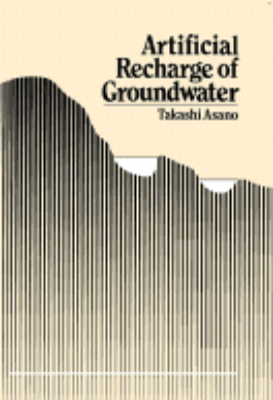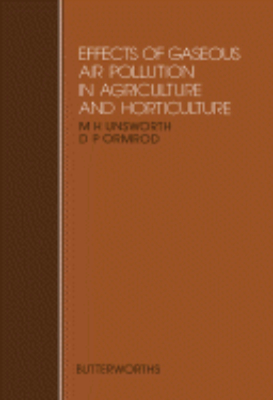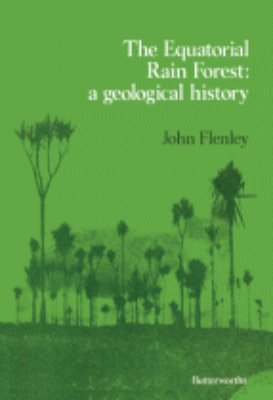E-Resources
Artificial Recharge of Groundwater
Artificial Recharge of Groundwater focuses on artificial recharge of groundwater basins as a means to increase the natural supply of groundwater, along with the technical issues involved. Special emphasis is placed on the use of reclaimed municipal wastewater as a source for artificial recharge of groundwater. This book is comprised of 26 chapters organized into five sections. After reviewing the state of the art of artificial recharge of groundwater, the discussion turns to the fundamental aspects of groundwater recharge, including the role of artificial recharge in groundwater basin management, recharge methods, hydraulics, monitoring, and modeling. The next section considers pretreatment processes for wastewater and renovation of wastewater with rapid-infiltration land treatment systems and describes the health effects of wastewater reuse in groundwater recharge. A number of artificial recharge operations using reclaimed wastewater are then highlighted, focusing on cases in various countries including Israel, Germany, Poland, Japan, the Netherlands, and the United States. The remaining chapters look at the extent of contaminant removal by the soil system and the fate of micropollutants during groundwater recharge as well as the legal and economic aspects of groundwater recharge. Research needs for groundwater quality management are also explored. This monograph is written for civil and sanitary engineers, agricultural engineers, hydrologists, environmental scientists, and research scientists as well as public works officials, consulting engineers, agriculturalists, industrialists, and students at colleges and universities.
Effects of Gaseous Air Pollution in Agriculture and Horticulture
Effects of Gaseous Air Pollution in Agriculture and Horticulture focuses on the impact of air pollution on agriculture and horticulture. This book discusses the existence of significant concentrations of gaseous pollutants in several agricultural regions of industrialized countries, which is facilitated by improved instrumentation and monitoring networks. Organized into six parts encompassing 49 chapters, this book begins with an overview of the two aspects of distribution of gas pollutants. This text then considers a technique for estimation of dose from measurements of gas concentration and stomatal conductance. Other chapters provide examples of monitoring of air-pollution effects on plants, with emphasis on both the concentrations and effects of air pollutants as they complement each other. This book discusses as well the formation and mechanism of action of nitrogen oxides. The final chapter deals with the peroxidation of membrane lipids. This book is a valuable resource for agriculturists, horticulturists, and scientists.
Introduction to Forest and Shade Tree Insects
This comprehenisive text approaches the subject from an ecological/evolutionary biological perspective. The assumption is that one cannot study forest insects without understanding the dynamics of the relationship between an insect and its host plant. This relationship includes knowing what factors control forest insect populations such as food, food quality, tree vigor, host selection, and symbiotic relationships. The authors also discuss tree-injuring insects from the perspective of their influence on tree physiology and growth as well as economic and commercial effects. The book represents a "modern" approach to the topic of forest and shade tree insects; is well-illustrated; and includes a comprehensive primary reference list.
Land Water and Mineral Resources in Science Education
Land, Water and Mineral Resources in Science Education presents the proceedings of a workshop that tackles land, water, and mineral resources, held in Bangalore, India in August 1985. The book is divided into four parts. Part 1, which serves as an introduction, covers the problems related to and teaching about the use of land, water, and mineral resources. Part 2 discusses the viewpoints and problems of land use and its educational implications. Part 3 talks about the problems and necessary developments for water resources, and Part 4 tackles the educational aspect of mineral resources and their nature, as well as mineral exploration. The text is recommended for educators who intend to improve the teaching of natural resources, the issues and problems that surround them, and their importance to humanity. The book will also be appreciated by those who work in fields that deal with natural resources.
Lexicon of Plant Pests and Diseases
Lexicon of Plant Pests and Diseases is a companion book to "Elsevier's Lexicon of Parasites and Diseases in Livestock" (1964). It is based on identical principles and is developed along the same lines, viz. one part as wide as possible in scope, systematically covering all living forms which are noxious, destructive or otherwise unfavorable to economic crops, trees, and plant products; and a second part made up of indexes to the six languages (Latin, English, French, Spanish, Italian, and German). The indexes facilitate retrieval of any desired term in the basic table. The table of contents explains fully the scope of the lexicon. Entries in the lexicon are arranged alphabetically within each section, according to the Latin name of the living form. In the Appendices English is the key language.
Light and Plant Development
Light and Plant Development presents the Proceedings of the 22nd University of Nottingham Easter School in Agricultural Science. It discusses the spectral sensitivity of inhibition of flowering by light. It addresses the action spectrum for leaf enlargement and stem growth inhibition. Some of the topics covered in the book are the nature of the blue light photoreceptor in higher plants and fungi; re-examination of photochemical properties and absorption characteristics of phytochrome using high-molecular-weight preparations; and intermediates in the photoconversion of phytochrome. The high irradiance reaction is fully covered. The physiological evidence and localised responses, intracellular localisation and action of phytochrome are discussed in detail. The text describes in depth the immunological visualisation of phytochrome. The fractionation procedures and terminology are presented completely. A chapter is devoted to the photocontrol of enzyme levels. Another section focuses on the ribosomal RNA synthesis in developing leaves. The book can provide useful information to botanists, chemists, students, and researchers.
Marine Faunal Diversity in India
"More than 70% of the earths surface is covered by water, making it an ideal and abundant resource for studying species diversity, faunal communities, and ecosystems. Indias massive coastline (5,044 miles) means it plays a major role in housing these faunal communities. Of the 32 animal phyla, 15 are represented in Indias marine ecosystem, covering more than 15,000 species. Marine and coastal ecosystems of India provide supporting services in the form of wide range of habitats. Major ecosystems such as estuaries, mangroves, coral reefs, lagoons, seaweeds and sea grasses serve as nurseries for both inshore and offshore fishes and others, many of which are supposed to be commercially exploited. Marine Faunal Diversity in India describes different marine faunal group ranges from sponges, corals, mollusks, crabs, fishes, reptiles, birds, marine mammals, mangrove fauna and tsunami impact on marine faunal diversity. The chapters, written by reputed experts in their respective fields, illustrate diversity and distribution of marine faunal communities. Key aspects of the ecology and conservation of this important ecosystem are also discussed. Marine Faunal Diversity in India provides marine biologists and related researchers with access to the latest research and field studies from this major region. Key Features. Provides the latest field research on marine faunal diversity throughout the vast and species-rich Indian region. Brings together expertise from top marine biology researchers in the country. Covers a diverse array of aquatic environments, including coastal and island areas. Discusses conservation ecology of marine faunal groups"
Natural Resource Administration
"Natural Resource and Wildlife Administration presents a clear perspective on natural resource administration in North America, how it developed, how it is currently structured, and where it might be heading. Intertwined areas of natural resources, including wildlife administration, fisheries, forestry, and other competitive land uses, are heavily discussed. The book covers the history of natural resource management in Europe and North America, proceeding to environmental law; agencies involved in wildlife and natural resource management; and the human dimensions of public relations and economic concerns. Natural Resource and Wildlife Administration provides solid background on the history of natural resource conservation, critical laws protecting resources, and the nature of agencies. The interconnectedness among natural resources makes this a useful text for disciplines such as wildlife, fisheries, and forestry. Key Features. Covers the development of natural resource law and the conservation agencies in North America, and also provides models for international use. Examines the roles of diverse federal, state, and non-governmental agencies, and how they cooperate as professionals to accomplish natural resources management. Leads readers to a greater understanding of the politics and interplay of priorities in professional conservation biology. Assists the certification processes of professional societies. Includes end-of-chapter questions for further thought and discussion, as well as offset boxes throughout the text to help explain more technical subjects"
Plant Pests and their Control
Plant Pests and their Control, Revised Edition discusses the concepts involved in pest management, along with its application, constraints, and opportunities. This book is comprised of 13 chapters that cover topics relevant in understanding the basis and practice of pest management. The first six chapters deal with the various aspects of entomology. These chapters cover the importance of insects; the physiological properties of insects; and reproduction and life cycle. The next chapter covers the non-insect pests. Chapter 8 discusses the relationship between insects and plants, while Chapter 9 covers the mortality factors of insect, such as predators, parasites, and pathogens. The next chapter presents the ecological background of pest control. The remaining three chapters discuss pest management itself. This text will be of great use to agriculturists, horticulturalists, and pest control professionals. Household owners dealing with residential pest infestation will also find this book a great source of information.
Principles and Measurements in Environmental Biology
Principles and Measurements in Environmental Biology aims to provide an understanding of some important physical principles and their application in biology. The book also aims to describe how instruments utilizing these principles can be used to measure biological and environmental processes and their interactions. This book covers the effects of the environment on biological organisms; the application of theories of radiation, kinetic theory, gas laws, and diffusion in biology; and water and its properties. The relation of plants with atmosphere near the ground is also discussed. This book also presents sampling techniques; the computation of errors used in the interpretation of data; the use of different devices; and data gathering and its practical applications. This text is for students, researchers, and professionals and experts in biology who wish to understand the mentioned principles in physics, its mathematical aspects, and their applications in the field.
The Equatorial Rain Forest
The Equatorial Rain Forest: A Geological History presents the equatorial vegetation as a dynamic entity with varied and highly significant history. It also discusses other types of equatorial regions. It addresses the vegetational history from a palaeoecological viewpoint. Some of the topics covered in the book are the vegetation of equatorial regions; the prelude to the quaternary; the quaternary vegetation of equatorial Latin America; the quaternary vegetation of equatorial Africa; the cretaceous period; and the quaternary vegetation of equatorial indo-malesia. The value of vegetational history is fully covered. The effect of man on vegetation is discussed in detail. The text describes in depth the methods of studying vegetational history. The Paleocene, Eocene, and Oligocene epochs are presented completely. A chapter is devoted to the palynological evidence and synthesis. Another section focuses on the xeroseres, hydroseres and related successions. The book can provide useful information to botanists, geologists, students, and researchers.













